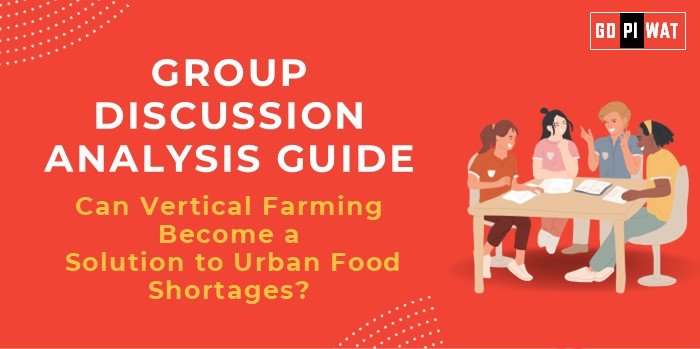📋 Group Discussion Analysis Guide: Can Vertical Farming Become a Solution to Urban Food Shortages?
🌐 Introduction to the Topic
- Opening Context: Urbanization is increasing at an unprecedented rate, with over 56% of the global population now residing in cities. This shift has stressed urban food systems, prompting the search for innovative solutions like vertical farming.
- Topic Background: Vertical farming, a method of cultivating crops in stacked layers, utilizes hydroponics, aeroponics, and controlled-environment agriculture. Pioneered in the 1990s, it gained global traction as a sustainable solution to urban food insecurity.
📊 Quick Facts and Key Statistics
- 🏙️ Global Urbanization Rate: 56% of the population lives in cities (UN, 2023).
- 💰 Market Value: Vertical farming market projected to reach $21 billion by 2026 (Research and Markets, 2023).
- 💧 Water Efficiency: Requires up to 90% less water compared to traditional agriculture (FAO).
- 🌾 Land Usage: Produces up to 10 times more crops per square meter (World Bank, 2022).
🤝 Stakeholders and Their Roles
- Government Agencies: Promote sustainable urban agriculture policies and subsidies.
- Private Sector: Develop technologies, invest in vertical farms, and ensure scalability.
- NGOs: Advocate for equitable food distribution and raise awareness about urban agriculture.
- Urban Communities: Participate in urban farming projects and drive local food systems.
🏆 Achievements and Challenges
✨ Achievements
- 📈 Efficient Land Use: Significant increase in food production per square meter.
- 💧 Water Conservation: Reduction of agricultural water use by up to 90%.
- 🌱 Climate Resilience: Year-round crop production independent of weather conditions.
⚠️ Challenges
- 💸 High Initial Costs: Capital-intensive setup and technology deployment.
- ⚡ Energy Dependency: Heavy reliance on artificial lighting and energy sources.
Global Comparisons:
- 🇯🇵 Japan: Pioneers in integrating robotics in vertical farming.
- 🇳🇱 Netherlands: Home to some of the world’s largest indoor vertical farms.
Case Studies: Singapore achieved 10% of its food security goals using vertical farming initiatives.
📖 Structured Arguments for Discussion
- ✅ Supporting Stance: “Vertical farming is the future of urban agriculture, providing sustainable and efficient solutions to food shortages.”
- ⚡ Opposing Stance: “The high costs and energy demands make vertical farming unfeasible for widespread adoption.”
- ⚖️ Balanced Perspective: “While vertical farming holds great promise, it must overcome economic and environmental challenges for large-scale adoption.”
💡 Effective Discussion Approaches
📣 Opening Approaches
- 📊 Begin with global statistics on food shortages and urbanization.
- 🌍 Cite a compelling case study like Singapore’s vertical farming success.
🛡️ Counter-Argument Handling
- ⚡ “While energy consumption is a concern, advancements in renewable energy can offset these costs.”
🛠️ Strategic Analysis of Strengths and Weaknesses
- Strengths: Water efficiency, land optimization, year-round production.
- Weaknesses: High energy and initial setup costs.
- Opportunities: Renewable energy integration, urban resilience projects.
- Threats: Technological barriers, scalability concerns.
🔗 Connecting with B-School Applications
- Real-World Applications:
- Finance: Investment strategies in agritech startups.
- Operations: Supply chain management for urban agriculture projects.
- Sample Interview Questions:
- “What are the economic implications of vertical farming in urban economies?”
- “Can vertical farming address global food security challenges?”
- Insights for B-School Students:
- Explore agritech startups during internships.
- Research renewable energy solutions for sustainable farming.


